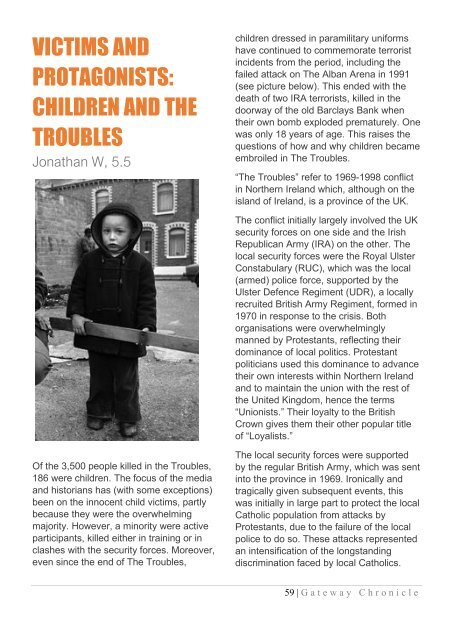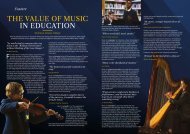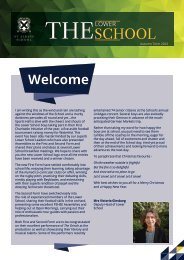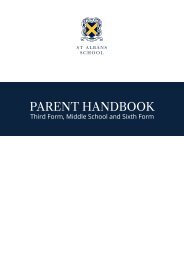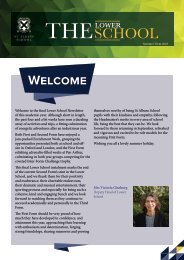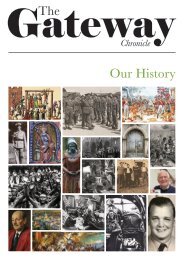Gateway Chronicle 2022
You also want an ePaper? Increase the reach of your titles
YUMPU automatically turns print PDFs into web optimized ePapers that Google loves.
VICTIMS AND<br />
PROTAGONISTS:<br />
CHILDREN AND THE<br />
TROUBLES<br />
Jonathan W, 5.5<br />
children dressed in paramilitary uniforms<br />
have continued to commemorate terrorist<br />
incidents from the period, including the<br />
failed attack on The Alban Arena in 1991<br />
(see picture below). This ended with the<br />
death of two IRA terrorists, killed in the<br />
doorway of the old Barclays Bank when<br />
their own bomb exploded prematurely. One<br />
was only 18 years of age. This raises the<br />
questions of how and why children became<br />
embroiled in The Troubles.<br />
“The Troubles” refer to 1969-1998 conflict<br />
in Northern Ireland which, although on the<br />
island of Ireland, is a province of the UK.<br />
The conflict initially largely involved the UK<br />
security forces on one side and the Irish<br />
Republican Army (IRA) on the other. The<br />
local security forces were the Royal Ulster<br />
Constabulary (RUC), which was the local<br />
(armed) police force, supported by the<br />
Ulster Defence Regiment (UDR), a locally<br />
recruited British Army Regiment, formed in<br />
1970 in response to the crisis. Both<br />
organisations were overwhelmingly<br />
manned by Protestants, reflecting their<br />
dominance of local politics. Protestant<br />
politicians used this dominance to advance<br />
their own interests within Northern Ireland<br />
and to maintain the union with the rest of<br />
the United Kingdom, hence the terms<br />
“Unionists.” Their loyalty to the British<br />
Crown gives them their other popular title<br />
of “Loyalists.”<br />
Of the 3,500 people killed in the Troubles,<br />
186 were children. The focus of the media<br />
and historians has (with some exceptions)<br />
been on the innocent child victims, partly<br />
because they were the overwhelming<br />
majority. However, a minority were active<br />
participants, killed either in training or in<br />
clashes with the security forces. Moreover,<br />
even since the end of The Troubles,<br />
The local security forces were supported<br />
by the regular British Army, which was sent<br />
into the province in 1969. Ironically and<br />
tragically given subsequent events, this<br />
was initially in large part to protect the local<br />
Catholic population from attacks by<br />
Protestants, due to the failure of the local<br />
police to do so. These attacks represented<br />
an intensification of the longstanding<br />
discrimination faced by local Catholics.<br />
59 | G ateway <strong>Chronicle</strong>


